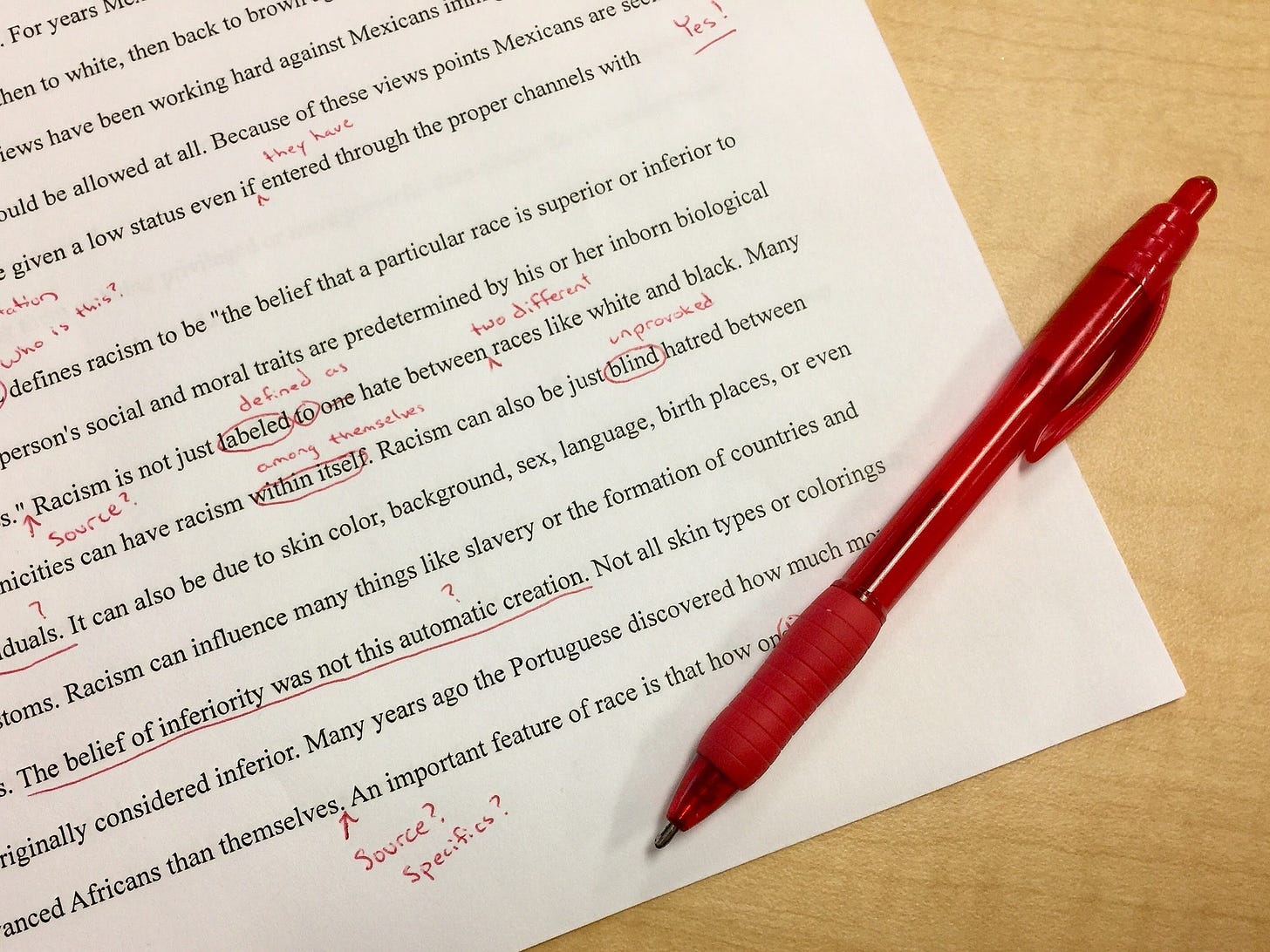Tip: Feedback Students Actually Read
Navigating the sneaking sense that students haven’t even read your comments, much less revised their work.
We know that feedback plays an important role in learning. Students say they want feedback. And yet, there’s often the sneaking sense that students haven’t even read your comments, much less revised their work accordingly.
Why do students not engage with (uptake) feedback productively?
Feedback is not provided at the right time for students to transfer what they learned to their next task - most frequently, we provide feedback too late for students to do anything with the comments
Feedback is too general, so students don’t see the relevance of the feedback provided to their own work -
Students aren’t sure how to implement feedback effectively - they lack strategies for making sense of and applying feedback
Students may not understand the academic language used

What should the feedback process look like?
Ideally, we want to avoid having students do too much work toward a project without getting some feedback to help them gauge whether or not they are on the right track. Instead, we want to think about ways to provide frequent feedback to students earlier in developing a project or writing assignment. Providing short, targeted feedback at regular intervals helps instructors spread out the work of responding to students’ developing ideas. Providing feedback goes faster when we are responding to something specific about the student's work - such as their research questions or list of sources - rather than trying to respond to everything all at once. Revising our feedback process to look more like the bottom timeline (below) is better for students, too - they are getting small chunks of manageable feedback, with clear expectations for how to use the feedback in the next cycle.
What can instructors do?
Communicate high expectations of students and give concrete direction for how to meet expectations - Wise feedback is a 3-part strategy that helps instructors frame feedback constructively
Focus on activating prior knowledge, cueing the student to general (foundational) principles, and then linking to a future task to help students with transfer-of-learning from one task to the next - this strategy is effective because it asks us to scaffold for students how to understand feedback and apply it to thinking about future assignments
Provide feedback in performance-based courses that focuses on communicating immediate and actionable feedback in sympathetic and supportive ways
Be creative in how you provide feedback - recording audio/video feedback on assignments can be faster for instructors and more engaging for students
Require students to demonstrate “improvement” in a task based on feedback provided provides a little extra incentive for students to use feedback productively
A final challenge…
As we have moved - some of us enthusiastically, some of us less so - into an LMS-centered feedback practice, these concerns have been compounded by issues related to students’ ability to manage feedback electronically. One of the challenges is what Winstone et al. (2021) refer to as spatial separation of grades and feedback: where students view feedback is frequently not where they can see their grades on an assignment. This friction (here, extra steps students must take to access feedback comments) means that some students pay attention to the grade or score earned but ignore the feedback. As instructors, we were already working against some natural reluctance to review and revise assignments, and the LMS presentation of feedback can make that more challenging.
How does your feedback process support student learning?
Thanks for reading!




Could we just could stop making continual excuses for them and actually hold them accountable?